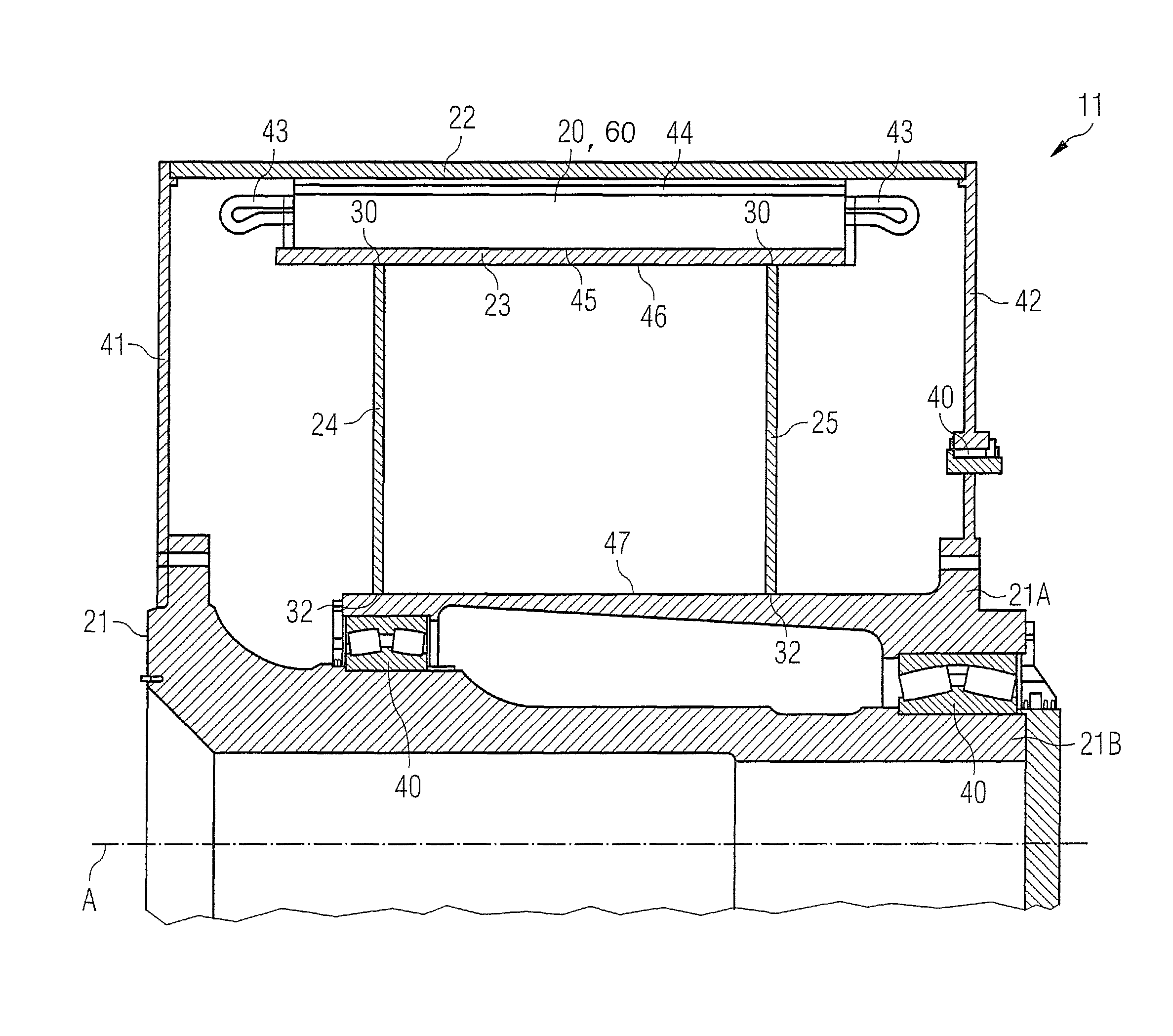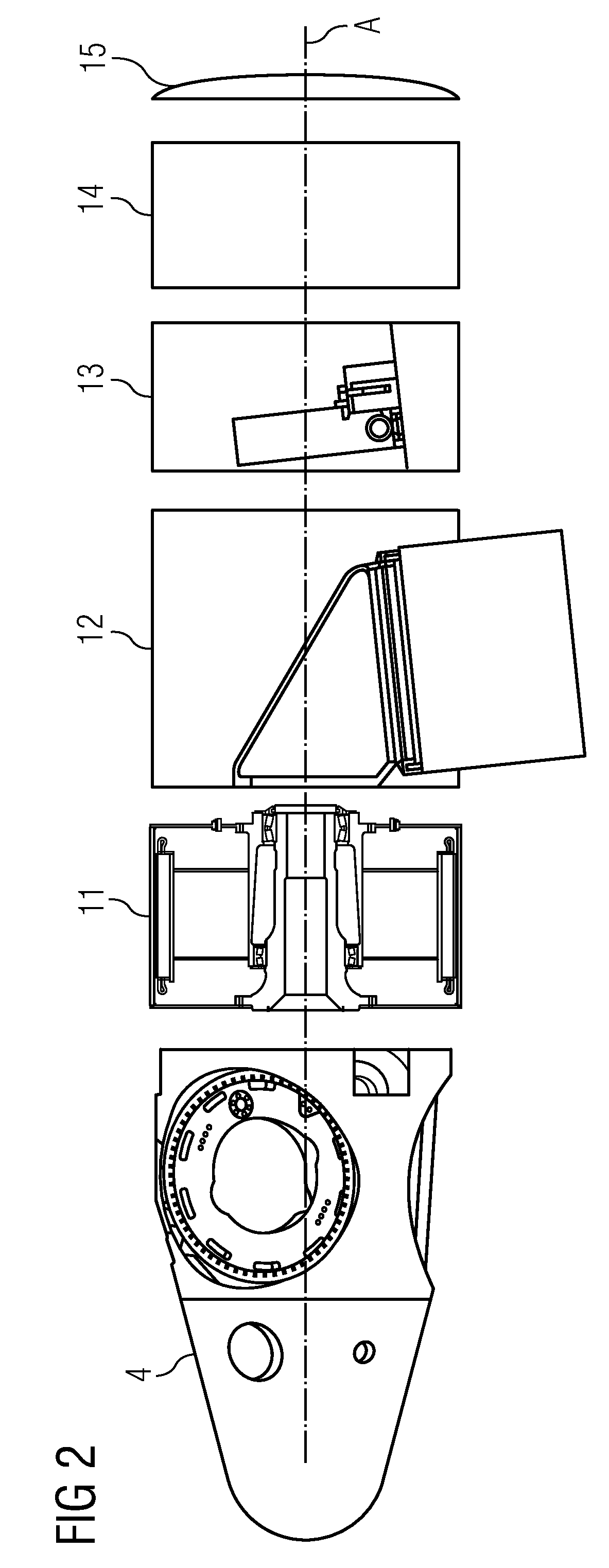Stator arrangement, generator and wind turbine
a generator and wind turbine technology, applied in the direction of electric generator control, magnetic circuit shape/form/construction, magnetic circuit rotating parts, etc., can solve the problems of comparatively rigid stator segments, and large and heavy generators, so as to achieve the lack of stiffness to maintain cylindricity
- Summary
- Abstract
- Description
- Claims
- Application Information
AI Technical Summary
Benefits of technology
Problems solved by technology
Method used
Image
Examples
Embodiment Construction
[0031]FIG. 1 shows a wind turbine 1 comprising a tower 2, a nacelle 3 and a hub 4 with rotor blades 5. In the nacelle 3 several further components of the wind turbine 1 are arranged like a generator 11 as it is schematically shown in FIG. 2. The generator 11 is in a not shown manner connected to the hub 4 for the production of electrical energy and has a substantially horizontally aligned centre axis A.
[0032]FIG. 2 shows some basic components of a wind turbine 1. The components are shown with a slight gap between each other, even though when assembled, these gaps are closed. Again, a hub 4 is shown to which the rotor blades—not shown—will be attached. Further components, each adjacent to each other, are the generator 11, the load / bearing section 12, which has a connection to the not shown tower 2. Next, further components are a control unit 13, cooling equipment 14, and an end cap 15.
[0033]FIG. 3 shows one embodiment of the generator 11 as the inventive electric machine with the inv...
PUM
 Login to View More
Login to View More Abstract
Description
Claims
Application Information
 Login to View More
Login to View More - R&D
- Intellectual Property
- Life Sciences
- Materials
- Tech Scout
- Unparalleled Data Quality
- Higher Quality Content
- 60% Fewer Hallucinations
Browse by: Latest US Patents, China's latest patents, Technical Efficacy Thesaurus, Application Domain, Technology Topic, Popular Technical Reports.
© 2025 PatSnap. All rights reserved.Legal|Privacy policy|Modern Slavery Act Transparency Statement|Sitemap|About US| Contact US: help@patsnap.com



